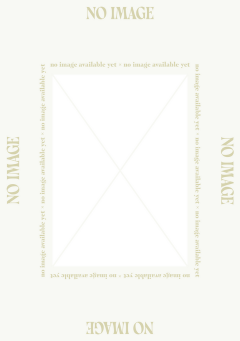My Cart
Your cart is empty
Looks like you haven't made your choice yet.
- Subtotal
James Ensor et la Nature Morte en Belgique (1830-1930).

Rose, Rose, Rose à Mes yeux
- Fonds Mercator/ Mercatorfonds
- Expo: 16/12/2023 - 14/04/2024, Mu.ZEE, Oostende
- by Bart Verschaffel, Sabine Taevernier & Stefan Huygebaert
More Information
| Publisher | Fonds Mercator/ Mercatorfonds |
|---|---|
| ISBN | 9789462303614 |
| Author(s) | Bart Verschaffel, Sabine Taevernier & Stefan Huygebaert |
| Publication date | December 2023 |
| Edition | Paperback |
| Dimensions | 260 x 210 mm |
| Illustrations | 160 col. & bw ill. |
| Pages | 176 |
| Language(s) | Fr. edition |
| Exhibition | Mu.ZEE, Oostende |
Description
Ce livre propose un voyage unique à travers l'histoire de la nature morte en Belgique au 19e siècle et au début du 20e, avec Ensor comme guide. La nature morte a joué un rôle important dans l'œuvre du peintre expressionniste et symboliste belge James Ensor (1860-1949). La qualité et l'importance de ses natures mortes complexes et intrigantes apparaissent clairement lorsqu'elles sont replacées dans le contexte plus large de l'évolution du genre en Belgique entre 1830 et 1930. La nature morte, qui avait dégénéré au début du 19e siècle pour devenir un genre décoratif sans contenu ni importance artistique, a été revalorisée de diverses manières tout au long du 19e siècle : par la monumentalisation, l'animation de l'image avec des poupées et des masques, l'exotisme ou l'intégration dans un intérieur. À cet égard, l'œuvre d'Ensor est particulièrement inventive. En outre, sa longue carrière a renforcé son impact sur de nombreux artistes, qui se sont tournés vers le modernisme à partir de 1880. Ses natures mortes tardives - souvent des transformations d'œuvres antérieures - sont peu connues et fascinantes. Outre un aperçu de cette partie importante de l'œuvre d'Ensor, l'ouvrage propose un panorama de la tradition académique belge du 19e siècle en matière de peinture décorative, avec des œuvres intrigantes de peintres peu connus comme Jean Robie, Hubert Bellis, Frans Mortelmans et Henri De Braekeleer, et de femmes artistes oubliées comme Berthe Art et Alice Ronner. Au début du 20e siècle, des artistes comme Louis Thevenet ont continué à développer le genre de la nature morte de manière traditionnelle, tandis que des innovateurs comme James Ensor, Léon Spilliaert, Marthe Donas, Walter Vaes et Gustave Van de Woestyne en ont donné des interprétations très personnelles. Cette tradition de la nature morte s'achève avec des artistes comme Jean Brusselmans et René Magritte, qui ont déconstruit l'espace pictural du "théâtre des choses".
This book is published on the occasion of the first exhibition ever entirely devoted to James Ensor's still lifes at Mu.ZEE (Ostend).
- Offers a new and unique visual overview of still life production in Belgium between 1830 and 1930, with the distinguished Belgian painter James Ensor as the protagonist.
- The first ever to focus on James Ensor's still lifes, a key genre in the artist's oeuvre.
- Discusses many lesser-known Belgian artists with an intriguing artistic production, including several women painters.
- The book and accompanying exhibition focus on the artistic exploration and innovation of the still life's pictorial space, and is therefore also relevant to the study of still life in general.
- The Authors: Sabine Taevernier is a recognised expert on het oeuvre of James Ensor. Bart Verschaffel publishes extensively on visual art, particularly on 19th and 20th-century Belgian art, and is the author of several art-theoretical studies on the classical painting genres in general, and still life in particular.
This book offers a unique journey through the history of still life in Belgium in the 19th and early 20th centuries, with Ensor as guide. Still life played an important role within the oeuvre of Belgian expressionist and symbolist painter James Ensor (1860-1949). The quality and significance of his intriguing, complex still lifes become clear when placed within the broader development of the genre in Belgium between 1830 and 1930. The still life, which in the early 19th century had degenerated into a decorative genre, devoid of content and artistic importance, was artistically revalued in various ways throughout the nineteenth century: by monumentalising it, by animating the image with dolls and masks, through exoticism, or by making it part of an interior. In this, Ensor's work is the most inventive. Moreover, his long career added to Ensor's artistic impact on many artists who from 1880 onwards lapped towards modernism. His late still lifes - often transformations of early works - are little known and intriguing. Besides an overlook of this important part of Ensor's oeuvre, the book offers an overview of the 19th-century Belgian academic tradition of decorative painting, with intriguing work by lesser-known painters such as Jean Robie, Hubert Bellis, Frans Mortelmans and Henri De Braekeleer, and forgotten female artists such as Berthe Art and Alice Ronner. In the early 20th century, artists such as Louis Thevenet continued to develop the genre of still life in a traditional manner, while innovators such as the late James Ensor, Léon Spilliaert, Marthe Donas, Walter Vaes and Gustave Van de Woestyne created highly personal interpretations. This tradition of the still life painting ends with artists such as Jean Brusselmans and René Magritte, who deconstructed the pictorial space of the 'theatre of things'.

James Ensor et la Nature Morte en Belgique (1830-1930).
